Extensor carpi radialis longus muscle
What is Extensor carpi radialis longus muscle?
The extensor carpi radialis longus is the name of an extensor muscle in the posterior compartment of the forearm. Depending on where they are, all forearm muscles can be divided into groups (radial and ulnar) and layers (superficial to deep). The Extensor Carpi Radialis is arranged as follows:
Brachioradialis, extensor carpi radialis brevis, extensor digitorum, extensor digiti minimi, and extensor carpi ulnaris make up the superficial layer.
Brachioradialis and extensor carpi radialis brevis are members of the radial group.
Between the humerus and the second metacarpal bone, this muscle stretches. It is powered by the radial nerve and acts on the wrist joint, resulting in hand extension and abduction (radial deviation). For effective hand gripping, these two actions are essential.
Origin of Extensor carpi radialis longus muscle
The anterior lower third of the lateral supracondylar ridge and the humeral intermuscular septum. The lateral epicondyle may occasionally be joined by the common extensor tendon.
Insertion
The second metacarpal’s base’s posterior surface.
Relations
The deep group of lower arm extensors and the middle of the anconeus are shallow to the extensor carpi radialis longus. The muscle, which is also lateral to the brachialis, is partially covered by the brachioradialis
The radial nerve travels through an extensive groove in the elbow, connecting the brachialis muscle laterally and the extensor carpi radialis longus muscle medially. Around 10 cm proximal to the radial styloid process, which is traveling between the brachioradialis and extensor carpi radialis longus at this point, the radial nerve’s course becomes more superficial.
Innervation
The radial nerve supplies innervation to the extensor carpi radialis longus, with the spinal nerves, C5-C8 making the majority of the contributions. The brachial plexus has a branch called the radial nerve.
Blood supply
The radial artery provides the majority of the blood supply to the extensor carpi radialis longus. The rest of the muscle receives blood from one of its recurrent radial branches, while the distal portion receives blood directly from it. Through the radial collateral artery, the brachial artery also supplies a small portion of the muscle.
Function of Extensor carpi radialis longus muscle
The wrist joint is primarily affected by the extensor carpi radialis longus, which results in two major actions:
Wrist expansion by working synergistically with extensor carpi radialis brevis and extensor carpi ulnaris.
Abduction of the hand (radial deviation) with the assistance of the flexor carpi radialis
The extensor carpi radialis longus makes little contribution to elbow flexion because it also spans the elbow. The extensor carpi radialis longus, along with other forearm extensors, is crucial to hand grip. The forearm extensors, including the extensor carpi radialis longus, must keep the wrist extended to get a good grip. As a result, wrist flexion is prevented and the forearm flexors’ contraction force is transferred to the fingers. The forearm flexor tendons would not be able to sufficiently shorten to produce a functional hand grip if the wrist did not extend.
Clinical Relevance
One of the three primary wrist extensors is the extensor carpi radialis longus. It is best as a wrist extensor when the elbow is expanded and when the essential ulnar deviator-extensor carpi ulnaris adjust an outspread deviation. Together with the extensor carpi ulnaris, the wrist extensors play an important functional role in gripping. By keeping the wrist extended, it is prevented from flexing under the action of the flexors digitorum superficialis and profundus, which cause these muscles to act on the fingers. The flexor tendons won’t be able to shorten enough to move the interphalangeal joints effectively if the wrist is allowed to flex. As a result, this develops into an active insufficiency state.
The extensors of the wrist become paralyzed when radial nerve damage occurs. Grip strength suffers as a result. However, a functional grip can be achieved with the wrist splinted in extension because the tendons of the flexors digitorum superficialis and profundus act on the fingers.
Intersection Syndrome is bursitis that occurs at the location where the tendons of the abductor pollicis longus and the extensor pollicis brevis cross over the tendons of the extensor carpi radialis that are proximal to the extent Tenosynovitis of the two extensor tendons within their synovial sheath or friction at this crossing site could be the cause. This can be confused with de Quervain’s syndrome, which causes crepitus, swelling, and tenderness. This muscle can be examined by extending and abducting the wrist against resistance with the forearm in a pronated position.
Rowers, canoeists, and racket sportsmen are all susceptible to this condition. The muscle belly prominence, which can be easily palpated, will be visually enhanced as a result. On the floor of the anatomical snuffbox, this position also makes it simple to palpate the tendon of the extensor carpi radialis longus. At the level of the carpal bones, this is a triangular, shallow depression on the posterolateral aspect of the hand. After traumatic events or when there is a suspicion of radial nerve paralysis, it is important to test the extensor carpi radialis longus’s function and integrity.
Assessment of Extensor carpi radialis longus muscle
Active movements
- Elbow flexion/extension
- Supination/pronation
- Wrist flexion/extension
- Radial/ulnar deviation
Passive movements
- Elbow flexion/extension
- Supination/pronation
- Wrist flexion/pronation
- Radial/ulnar deviation
Resisted movements
- Wrist extension
- Wrist abduction (radial deviation)
- Wrist extension together with abduction
- Grip test
Extensor carpi radialis longus muscle stretching exercise
Extend the arm in front of you whether you are sitting or standing.
With a completely broadened or locked-out elbow, flex the wrist.
Additionally, bring the wrist into an ulnar deviation (adduction) with the other hand.
After 30 seconds, move out of this position.
Extensor carpi radialis muscle strengthening exercise
Dowel radial deviation
This wrist-strengthening exercise challenges the forearm muscles with a broomstick or dowel. Hold onto one end of a broomstick or dowel as you sit down to begin. With your thigh supporting the forearm, begin the exercise with your thumbs up. Bring your thumb close to your forearm as you lift the dowel. Reduce the dowel gradually to complete the redundant. This exercise becomes easier as your grip gets closer to the center of the stick.
Barbell wrist extensor roller
This activity needs a strong band, a racked barbell, and a kettlebell. Cover one end of the strength band around the cuff of a barbell at shoulder height to start. To obtain the iron weight setup, feed the opposite end of the band via the handle’s circle and near the bulb. Standing after the barbell cuff, maintain it with your palms facing down. Turn the barbell cuff in your direction to extend the wrists and lift the kettlebell off the bottom. After the kettlebell reaches its maximum height, gradually loosen your grip to permit it to descend toward the bottom. Pay close concentration on where your feet are positioned during this phase. Alternately, you could slowly lower the weight by rolling the barbell cuff ahead with your wrists.
Banded wrist extension
This is a wrist extensor strengthening exercise. To begin, place the back of your forearm on your thigh, gripping a loop band with your palm facing the floor and the wrist hanging off the knee. The second end of the loop band is put in place by the forefoot. Broaden your wrist by raising it upwards while keeping the lower arm fixed to your thigh. By dropping the wrist, slowly lower the band toward the floor. Repeat as necessary.
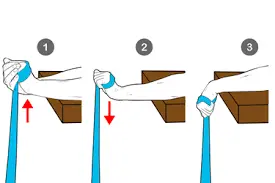
Reverse curl
The common wrist extensors and elbow flexors are strengthened in this exercise. Begin by holding a dumbbell in your palms down. During this exercise, keep your elbow directly below your shoulder and brace your core to maintain a neutral spine. Raise the load by twisting the elbow and keeping the wrists unbiased. To finish a repetition, lower the weight back down without swaying the arm or body.
Radial deviations
The purpose of this exercise is to strengthen the wrist. To support your forearm, place it on a firm surface. Holding a light dumbbell at one end with your thumbs up, slowly lower it by letting it fall away from you and toward the floor. Lift the weight back up to finish a rep.

FAQ
Why do I have pain in my extensor carpi radialis longus?
What are some of the most frequent ailments that affect the Extensor Carpi Radialis Longus? Overuse of the muscles and tendons in your forearm can lead to Tennis Elbow, also known as lateral epicondylitis. Your elbow and arm may experience burning and pain as a result of this condition.
How should the extensor carpi radialis longus be massaged?
Palpation of the Extensor Carpi Radialis Longus Muscle Place your fingers on this area and move them slightly toward the inner forearm radius. Then steal your wrist to within/towards your span and feel which muscle is contracting with this development.
What kind of exercise strengthens the longus extensor carpi?
Extensor carpi radialis longus exercises To perform the stretch, hold one hand straight while applying light pressure with the other and bending the wrist so that the fingers point down to the ground. Keep stretching for thirty seconds. On the other hand, you can apply pressure by using a wall.
What is the extensor carpi radialis longus’s purpose?
Function. Together with the extensor carpi radialis brevis, the extensor carpi radialis longus causes wrist abduction and extension (radial deviation). Additionally, the extensor carpi radialis longus is active during fist clenching and may aid in elbow flexion.
What distinguishes the extensor carpi radialis longus from the brevis extensor carpi?
In human anatomy, the forearm muscle known as the extensor carpi radialis brevis is responsible for extending and abducting the wrist. The extensor carpi radialis longus, which is located above the proximal end of the extensor carpi radialis brevis, is shorter and thicker than this one.

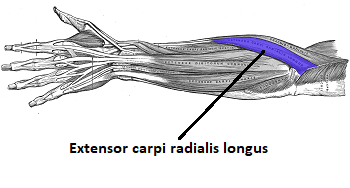
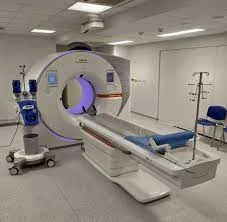
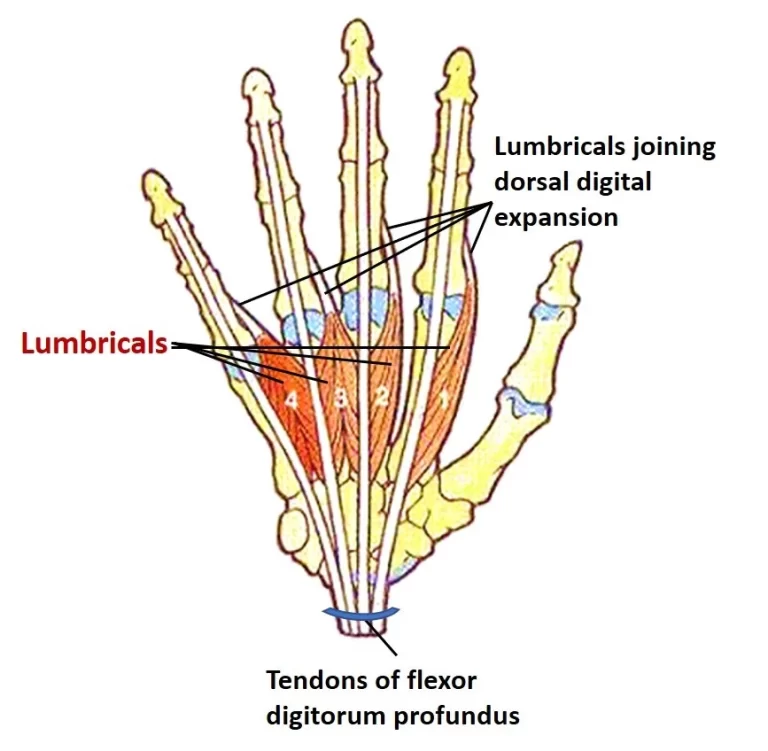
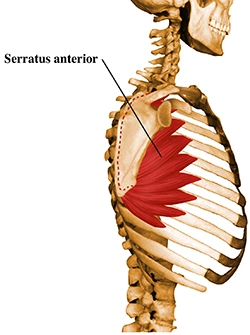
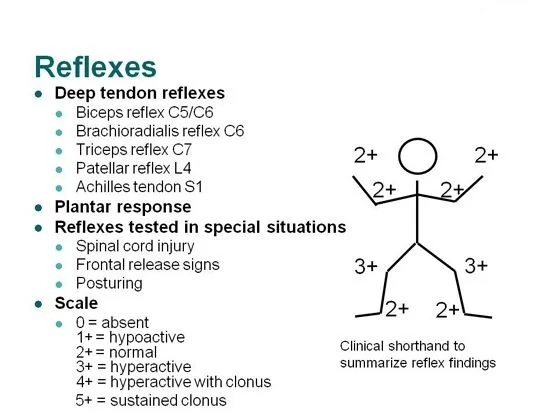
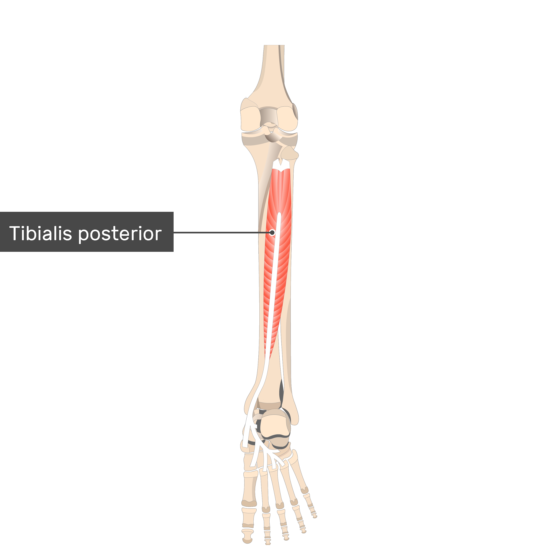
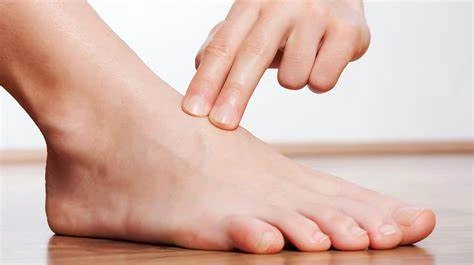
2 Comments